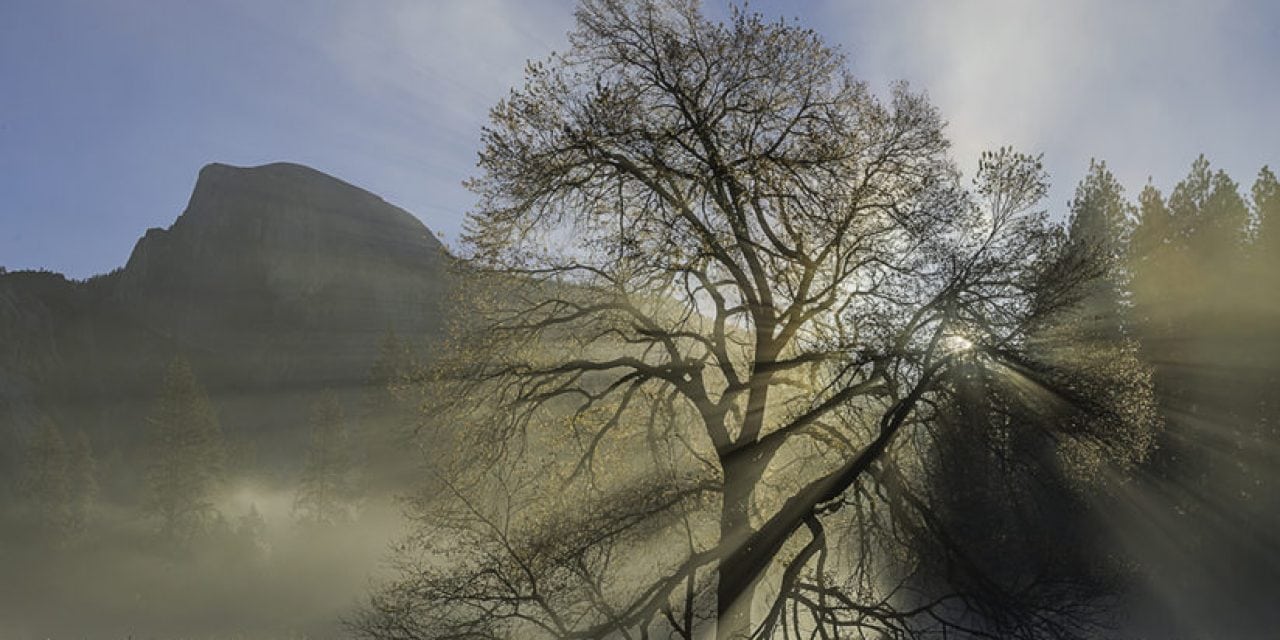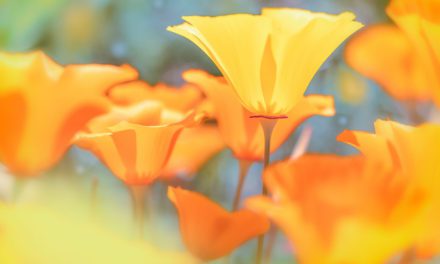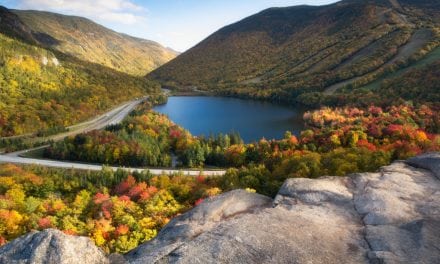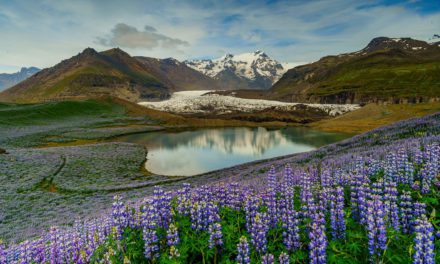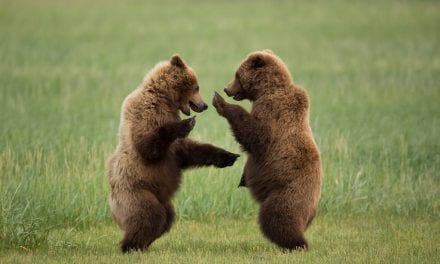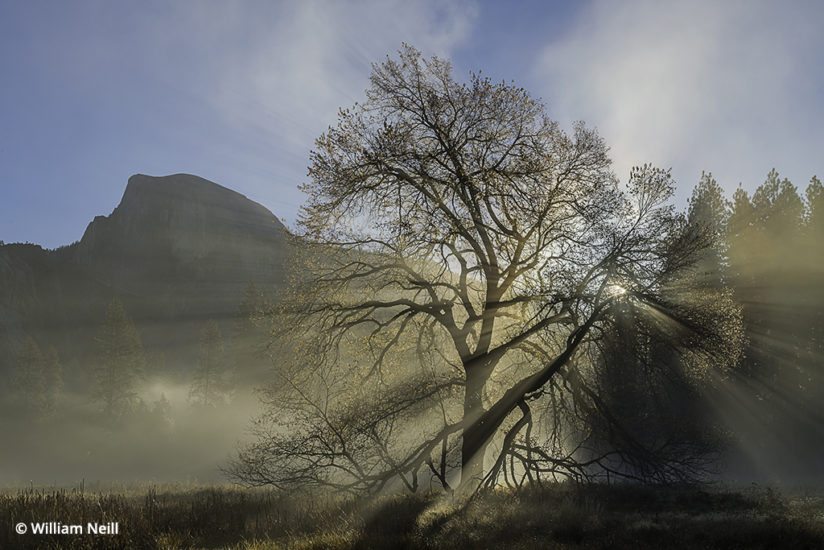
“And you may ask yourself, well … how did I get here?”
–Talking Heads, “Once In A Lifetime”
I was talking to someone recently who asked me what kind of photographs I make. I paused for a moment to ponder this basic but critical question, then answered that I specialize in photographing the details of nature. Although I revel in capturing the majestic grand scene when the elements all come together, I prefer focusing on the intimate landscape. Rather than describing the wide scene in front of me, I zoom in tightly, attempting to imbue my images with magic and mystery by isolating unique details I discover. By creating photographs where the content or orientation is not immediately apparent, a magical, mystical feeling may come through. I would rather make an image that asks a question than answers one; that intrigues and arouses curiosity in the viewer.
Many of my “On Landscape” columns published in Outdoor Photographer have shared my thoughts on how best to develop thematic portfolios, a distinctive style and a career as a creative landscape photographer. Perhaps if I share some thoughts and stories about my career, they will help you with your own landscape photography.
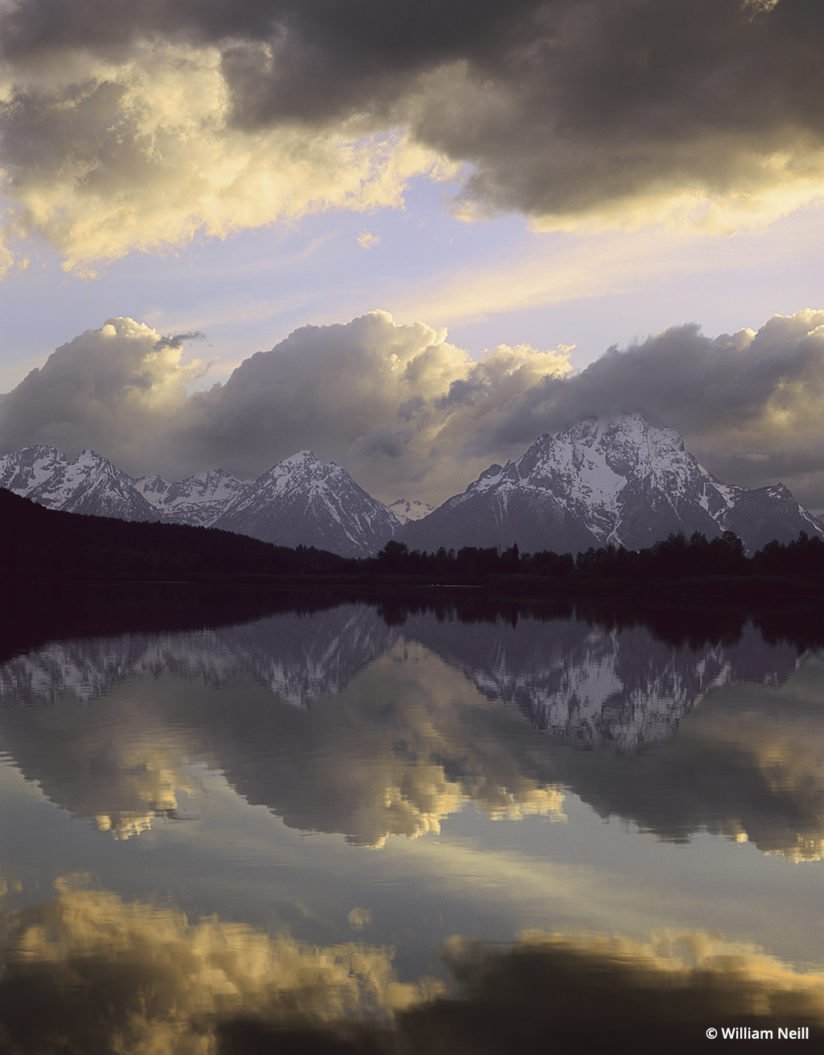
Finding Your Voice
Over the years, I have gained a sense of myself as a photographer, finding a certain clarity about what inspires me to photograph and what I wish to communicate. Fortunately, this clarity came early in my career. In my college years, I studied the works of landscape masters such as Eliot Porter and Paul Caponigro, who focused more on the details of nature rather than the broad, descriptive view. Just a few years after buying my first camera in 1974, I moved to Yosemite and never left. Living in or just outside the park continuously since 1977 has been key to my development as an artist. After a few summers working for the National Park Service, I was hired to be the photographer-in-residence at The Ansel Adams Gallery. I got to know Ansel and attended many of his summer workshop sessions, meeting other world-class photographers such as Ernst Haas, Joel Meyerowitz and Jerry Uelsmann. I started teaching photography to park visitors, taking them for daily “camera walks” in the meadow near the gallery. I learned to make my own color prints, ironically, in Ansel’s black-and-white darkroom. I listened to the photographers I met and explored this famous landscape.
Photographers find their voice when they discover what subjects move them most deeply. That passion, that emotion from within is the magic element. An excellent way to concentrate one’s attention is to develop thematic portfolios based on those emotional connections. The first phase of this development is to see what themes exist in your photographs and which of those are the most promising, and to start editing the images into a portfolio that exemplifies your best work.
Curating Your Photography
There are two main requirements for an exceptional collection: there must be a coherent theme that moves you and motivates you, and there should be consistent quality. In any situation where you show your work, great images are diluted when average images are included to “fill out” your presentation.
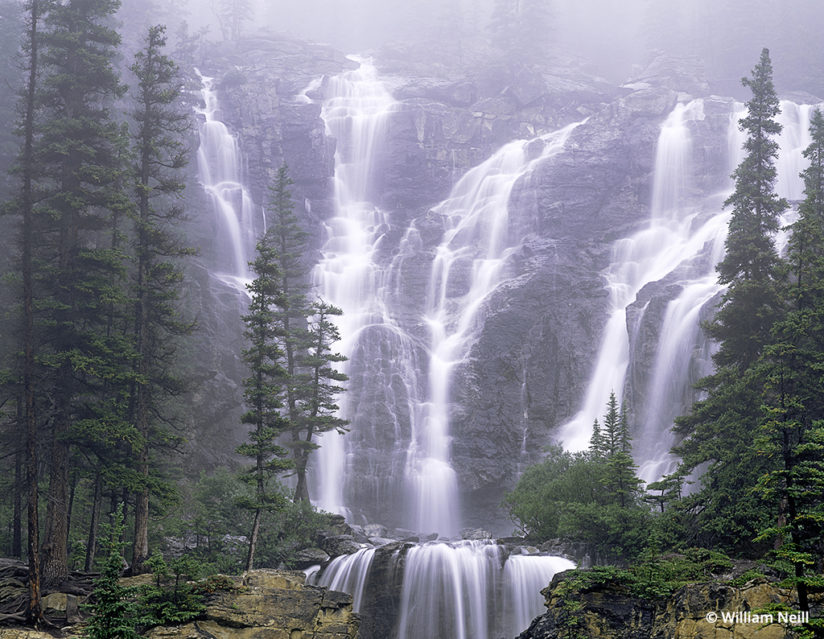
Learning to think in themes is an ongoing process that can continue for years or even decades. As you begin to assess the current level of your work, you also learn to maintain that standard of quality using your editing skills and become conscious of ways to improve your future efforts. There is no set way to do this, so we must learn to trust our own instincts and observations, and listen to the opinions of others we respect. Those instincts depend on how well we feel an image translates our vision, plus the equally subjective process of comparing our images to those of others.
With a long-term persistence and commitment to my portfolios, every year I’ve made a few new top level images, slowly building the depth of each theme. The payoff shows in a new book to be released this fall. The photographs are organized by those main themes: an in-depth look at my “Landscapes of the Spirit” work; my recent “Antarctic Dreams” series; a black-and-white portfolio entitled “Meditations in Monochrome;” my “By Nature’s Design” series of patterns in nature imagery; a portfolio of my ICM (intentional camera movement) work called “Impressions of Light;” and last, but not least, a collection of Yosemite photographs I call “Sanctuary in Stone.”
The titles are important because they encapsulate the ideas and passion for each theme, and guide the viewer toward those ideas. More importantly, a theme concept can inform your efforts in the field and subsequent editing sessions. When editing, you not only judge both technical and aesthetic aspects, but you consider whether the photograph adds depth and quality to your chosen theme.
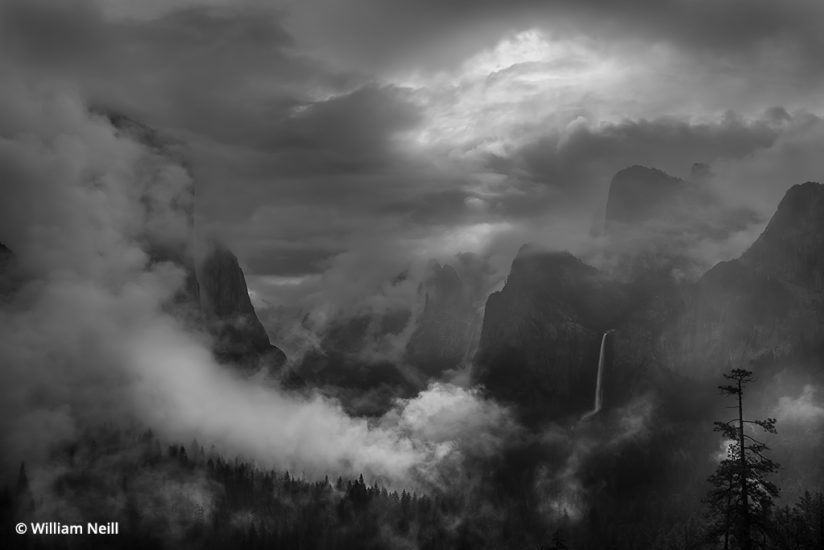
Although the Antarctica photographs were made over only a five-day voyage with Luminous Landscape, my other themes are collections created over four decades. My black-and-white images offer an example of where the inspiration began. Although I’ve gravitated to working in color, early on I was more strongly influenced creatively by black-and-white masters Minor White, Edward and Brett Weston, Wynn Bullock and Paul Caponigro. Seeing the abstract, mysterious and less-literal landscape imagery these photographers often made, I was inspired to strive for the same effect in color. Many years passed as I pursued this goal. Digital technology eventually progressed to the point that allowed for high-quality black-and-white software conversions from digital capture and scans of my color film. When a corporate art project for black-and-white murals was presented to me, I happily dove into the editing and processing of images from my 4×5 film archive. The project led me to expand my initial selections into a full-fledged theme, transforming a long-latent passion for the black-and-white landscape.
Preparing For Presentation
I recently prepared an exhibit for The Ansel Adams Gallery in Yosemite. The gallery has been showing my prints since 1983, when Ansel himself approved of my representation there. Each exhibition there has taken on a different flavor depending on the curator, the season and what new images I have made. When deciding what to print, I have naturally focused on showing my most creative work, but the final choices are a collaboration between myself and the curator. Each gallery I work with has a different clientele and curatorial focus and knows their customers best.
Writing an artist’s statement is an excellent way to give voice to a thematic concept and guide the viewer to understand your point of view, whether for a book, exhibition or online portfolio. Of course, photographs are visual communications and should speak to us directly without verbal definition. However, writing can add important depth to the impact of images for any project. Words matter. Ideas matter. For an exhibit there a few years back, I entitled it “Sanctuary,” and I wrote the following artist’s statement for the exhibition:
“The theme of Sanctuary provides the foundation of my exhibit selection. Preserves of nature such as Yosemite offer a sense of protection from outside forces, much as do the walls of a church or temple. From within the protected walls, the peacefulness and beauty of Nature, its quality of sanctuary, gives comfort and calm. Given this sense of Sanctuary, the creative energies of an individual are given the freedom to express what one feels, to express the connection between the soul and the beauty of Creation. I can’t speak for others but this is what I have experienced.”

Although not entirely based on the new book, my Yosemite exhibit was a retrospective drawn from my 40 years living in and next to the park. In writing a statement for the exhibit, I wrote the following words to describe my creative process.
“Seeing and feeling beauty is more vital to me than any resulting imagery. When the key elements of photography—light, composition, and emotion—are before me, I am fully engaged, yet detached, without expectations. The magic of my discoveries—whether the dramatic light of a clearing storm or an intimate detail on the forest floor—recharges my spirit with a sense of wonder. The intensity of the experience makes me feel vibrant and alive, the necessary first step to creating a transcendent image.”
I’ve had the good fortune of having my photographs exhibited and published over many years. The first book I illustrated was The Sense of Wonder by nature writer Rachel Carson, published in 1990 by The Nature Company. The success of this book, reprinted in nine editions, led to 10 subsequent books. Flash forward to 2017, and I have a new retrospective book being published by Triplekite Publishing of the United Kingdom. Four decades as a fine art landscape photographer are represented within.
I have been working on the book since the beginning of 2017, but the idea started to come together three years ago, when I contacted Triplekite Publishing. The book of theirs that caught my eye was Iceland, Above & Below by Hans Strand. I could quickly tell from the sample page layouts on their website that I shared the publisher’s sense of book design, specializing in fine art landscape photography, as well as their focus on high-quality reproduction, clean design and large format for their books.
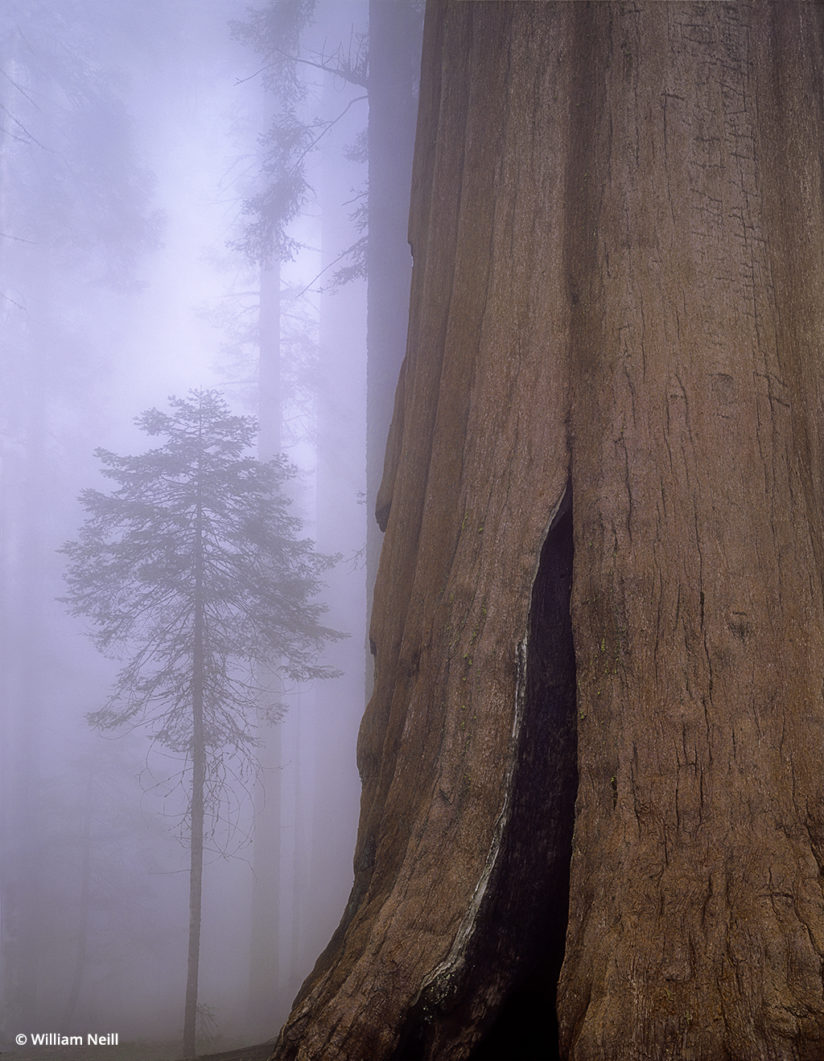
The collection, entitled William Neill, Photographer: A Retrospective features 151 images, many never before published. Included are images taken with a 35mm film camera from the 1970s and 1980s, through to my current digital captures. A significant number are photographs made with a 4×5 film camera. It is an amazing feeling as I pulled together 40 years of photography, but there is also great tension as we entered the final stretch of the book building process. Writing my essays, used to introduce each theme, was a challenge, requiring I be both concise and poignant. Essays by Art Wolfe and John Weller supplement my writings in the book. With 151 images in six chapters highlighting my themes, I hope that a sense of my artist’s journey comes through.
Learn to focus on your greatest sources of inspiration. Commit to seeking your own creative vision. Consider what style or themes drive your passion to photograph, and follow that path even if it is “the long road” to success. Good luck and good light.
The post William Neill: Retrospective appeared first on Outdoor Photographer.

